Inelastic Responses and Finite Element Predictions of Fiber Cementitious Composite and Concrete Columns
Abstract
1. Introduction
2. Properties of SHCC and Manufactures of Column Specimens
2.1. Mixing and Properties of SHCC
2.2. Manufacture of RC and R-SHCC Column Specimens
3. Beam-Column Finite Elements with Flexibility Formulation
3.1. Beam-Column Finite Element Formulation
3.2. Isoparametric Finite Element with Layered Section Discretization
4. Comparison of Experiments and Finite Element Predictions of Columns
5. Conclusions
Author Contributions
Funding
Institutional Review Board Statement
Informed Consent Statement
Data Availability Statement
Conflicts of Interest
References
- Paulay, T.; Priestley, M.J.N. Seismic Design of Reinforced Concrete and Masonry Buildings; John Wiley & Sons: New York, NY, USA, 1992; p. 744. [Google Scholar]
- Priestley, M.J.N.; Seible, F.; Calvi, G.M. Seismic Design and Retrofit of Bridges; John Wiley & Sons: New York, NY, USA, 1996; p. 686. [Google Scholar]
- Cho, C.-G.; Kim, Y.-Y.; Feo, L.; Hui, D. Cyclic responses of reinforced concrete composite columns strengthened in the plastic hinge region by HPFRC mortar. Compos. Struct. 2012, 94, 2246–2253. [Google Scholar] [CrossRef]
- Clough, R.; Johnston, S. Effect of Stiffness Degradation on earthquake ductility requirements. In Proceedings of the Transactions of Japan Earthquake Engineering Symposium, Tokyo, Japan; October 1966; pp. 195–198. [Google Scholar]
- Giberson, M. The Response of Nonlinear Multi-Story Structures Subjected to Earthquake Excitations. Ph.D. Thesis, California Institute of Technology, Pasadena, CA, USA, May 1967. [Google Scholar]
- Otani, S. Inelastic Analysis of R/C Frame Structures. J. Struct. Div. 1974, 100, 1433–1449. [Google Scholar] [CrossRef]
- Meyer, C.; Roufaiel, M.S.L.; Arzoumanidis, S.G. Analysis of damaged concrete frames for cyclic loads. Earthq. Eng. Struct. Dyn. 1983, 11, 207–228. [Google Scholar] [CrossRef]
- Cho, C.G.; Kwon, M. Development and modeling of frictional wall damper and its application in R/C frame structures. Earthq. Eng. Struct. Dyn. 2004, 33, 821–838. [Google Scholar] [CrossRef]
- Li, V.C. From Micromechanics to Structural Engineering—The Design of Cementitious Composites for Civil Engineering Applications. J. Struc. Mech. Earth. Eng. 1993, 10, 37–48. [Google Scholar]
- Cho, C.-G.; Ha, G.-J.; Kim, Y.-Y. Nonlinear model of reinforced concrete frames retrofitted by in-filled HPFRCC walls. Struct. Eng. Mech. 2008, 30, 211–223. [Google Scholar] [CrossRef]
- Kim, H.K.; Cho, C.G.; Lee, S.J.; Lee, Y.H.; Kim, T. Structural Performance and Reinforcement Improvement of Structural Walls Using Strain-Hardening Cementitious Composites. Sustainability 2021, 13, 3607. [Google Scholar] [CrossRef]
- Ogura, H.; Nerella, V.N.; Mechtcherine, V. Developing and Testing of Strain-Hardening Cement-Based Composites (SHCC) in the Context of 3D-Printing. Materials 2020, 13, 1375. [Google Scholar] [CrossRef] [PubMed]
- Wang, P.; Jiao, M.; Hu, C.; Tian, L.; Zhao, T.; Lei, D.; Fu, H. Research on Bonding and Shrinkage Properties of SHCC-Repaired Concrete Beams. Materials 2018, 11, 1757. [Google Scholar] [CrossRef] [PubMed]
- Kanakubo, T.; Koba, T.; Yamada, K. Flexural Characteristics of Functionally Graded Fiber-Reinforced Cementitious Composite with Polyvinyl Alcohol Fiber. J. Compos. Sci. 2021, 5, 94. [Google Scholar] [CrossRef]
- Kanda, T.; Li, V.C. Interface Property and Apparent Strength of a High Strength Hydrophilic Fiber in Cement Matrix. ASCE J. Mater. Civ. Eng. 1998, 10, 5–13. [Google Scholar] [CrossRef]
- Lee, B.Y.; Cho, C.G.; Lim, H.J.; Song, J.K.; Yang, K.H.; Li, V. Strain hardening fiber reinforced alkali-activated mortar–A feasibility study. Constr. Build. Mater. 2012, 37, 15–20. [Google Scholar] [CrossRef]
- Li, V.C.; Hashida, T. Engineering ductile fracture in brittle matrix composites. J. Mater. Sci. Lett. 1993, 12, 898–901. [Google Scholar] [CrossRef]
- Lin, Z.; Li, V.C. Crack bridging in fiber reinforced cementitious composites with slip-hardening interfaces. J. Mech. Phys. Solids 1997, 45, 763–787. [Google Scholar] [CrossRef]
- Spacone, E.; Filippou, F.C.; Taucer, F.F. Fibre Beam-Column Model for Nonlinear Analysis of R/C Frames: Part I. Formulation. Earthq. Eng. Struct. Dyn. 1996, 25, 711–725. [Google Scholar] [CrossRef]
- Kent, D.C.; Park, R. Flexural Members with Confined Concrete. J. Struct. Div. 1971, 97, 1969–1990. [Google Scholar] [CrossRef]
- Menegotto, M.; Pinto, P.E. Method of analysis for cyclically loaded reinforced concrete plane frames including changes in geometry and nonelastic behavior of elements under combined normal force and bending. In Proceedings of the IABSE Symposium on Resistance and Ultimate Deformability of Structures Acted on by Well-Defined Repeated Loads, Lisbon, Portugal, 13–14 September 1973. [Google Scholar]
- Cho, C.-G.; Kwon, M. Nonlinear failure prediction of concrete composite columns by a mixed finite element formulation. Eng. Fail. Anal. 2011, 18, 1723–1734. [Google Scholar] [CrossRef]

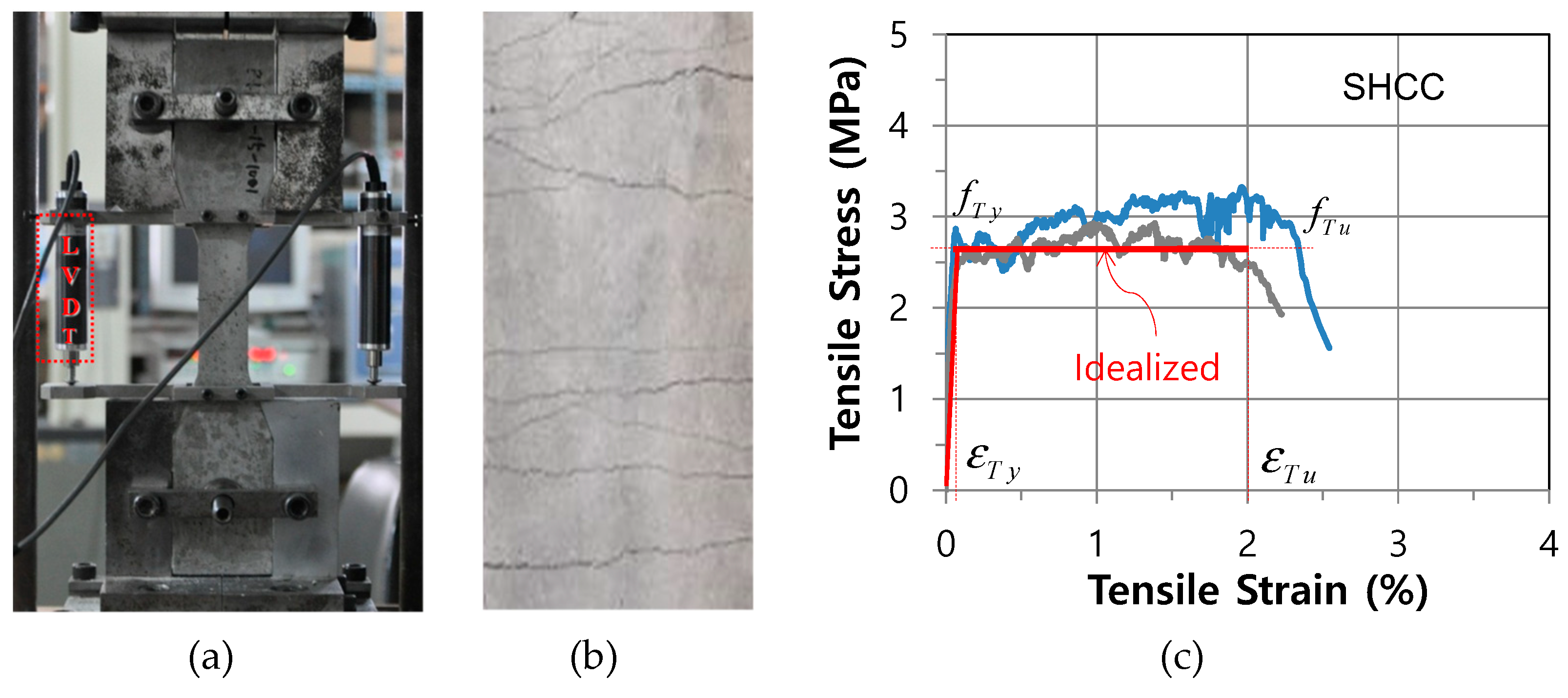

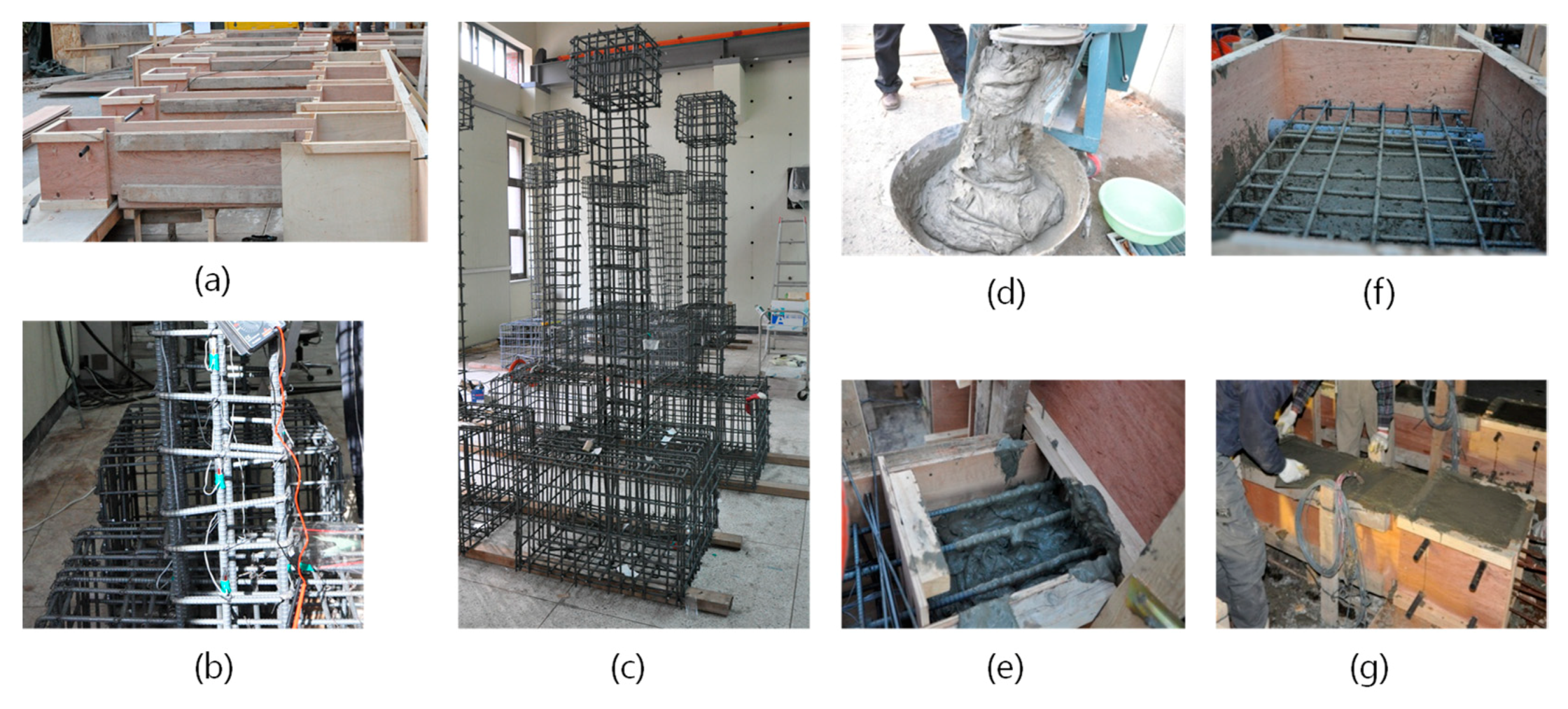
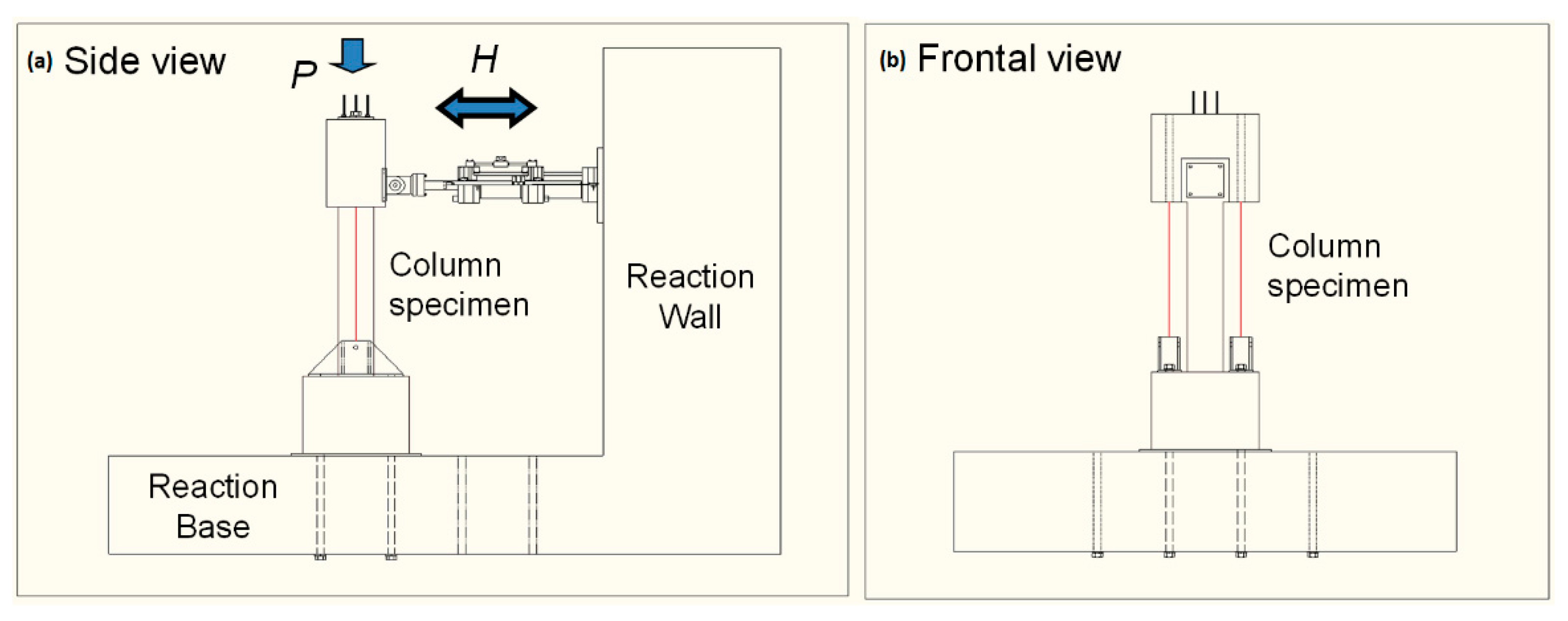

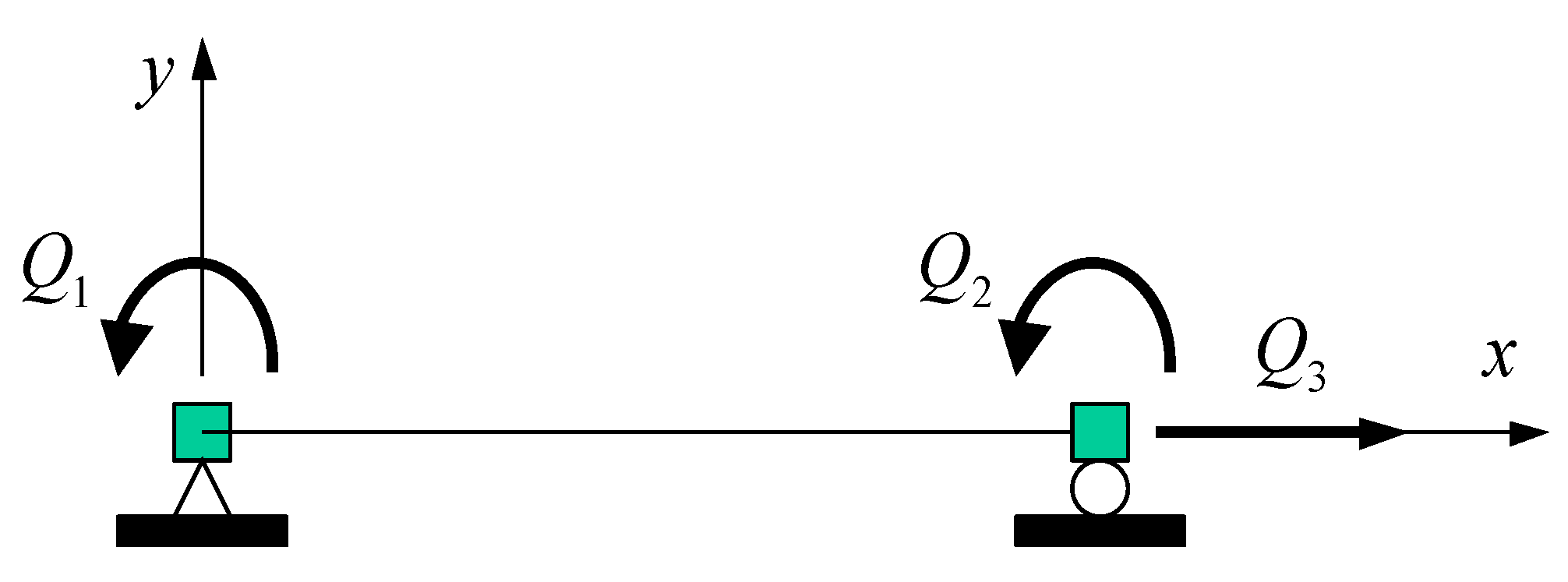
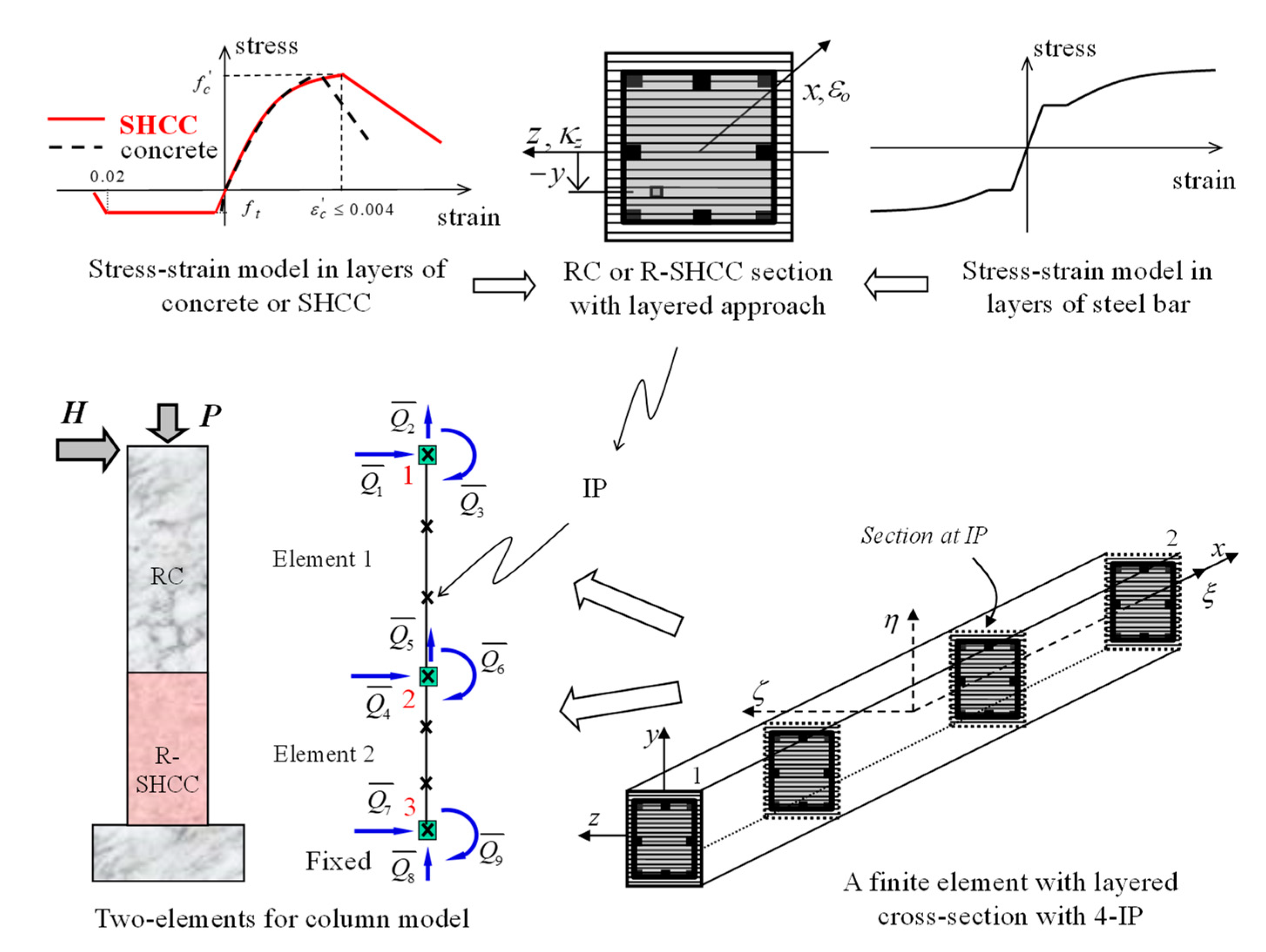
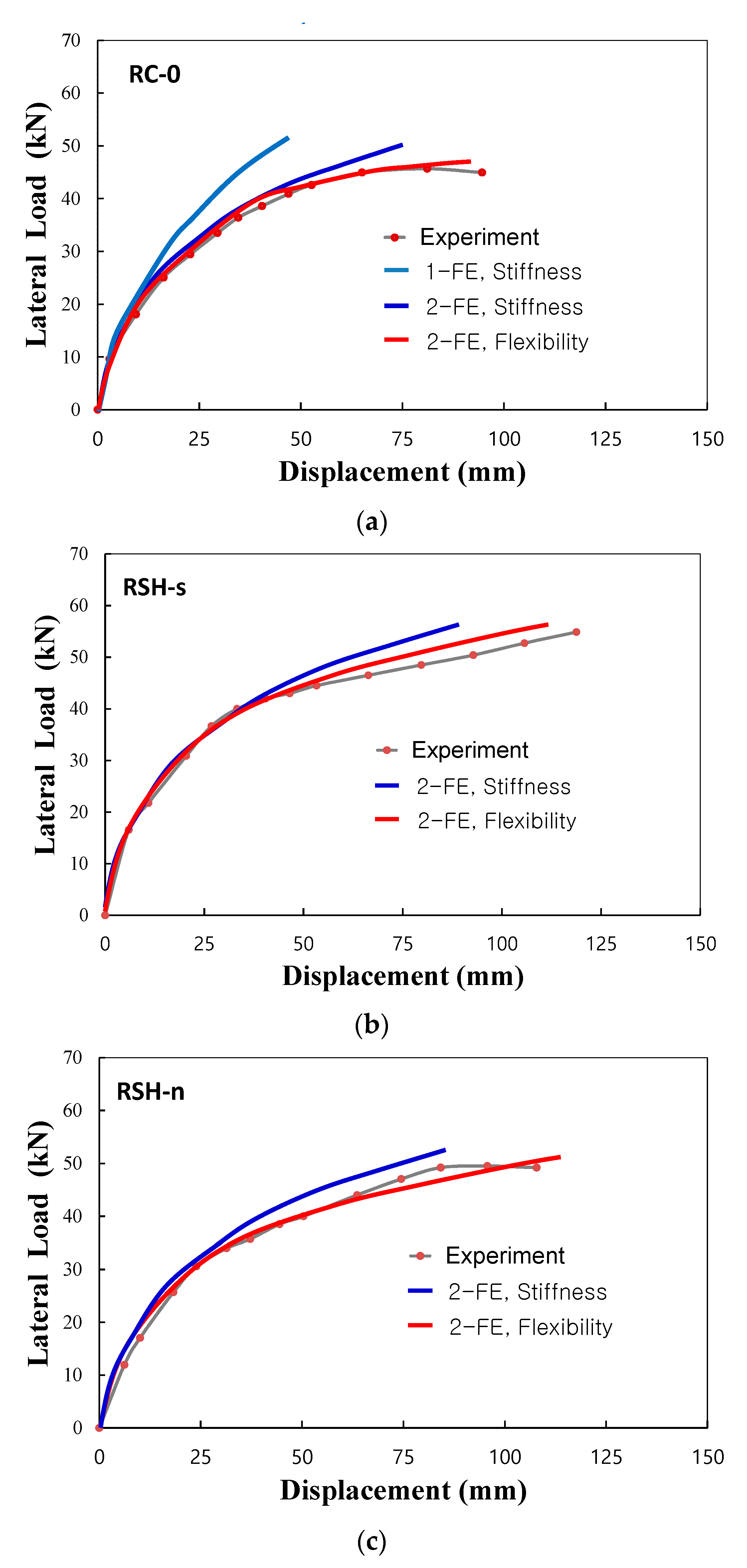
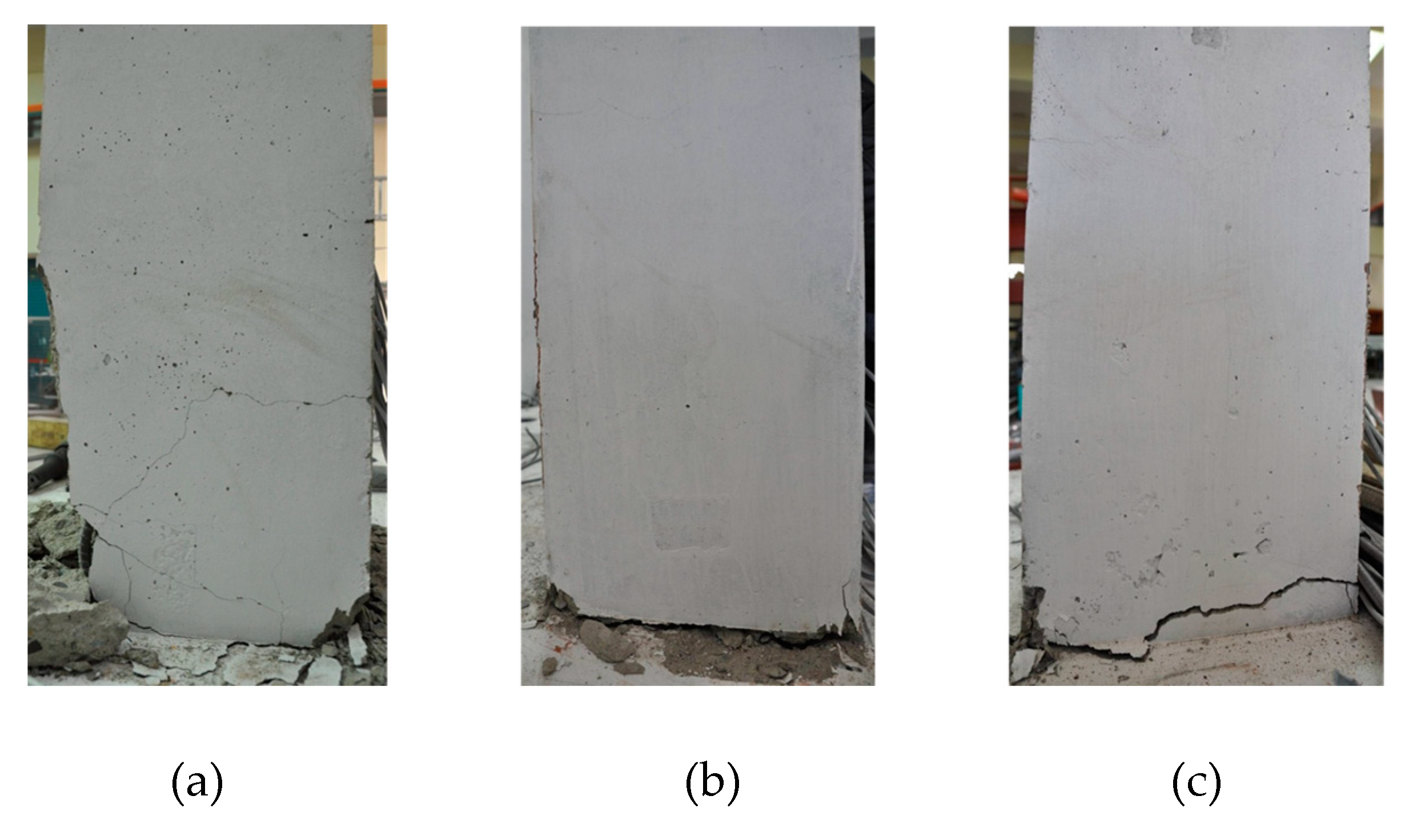
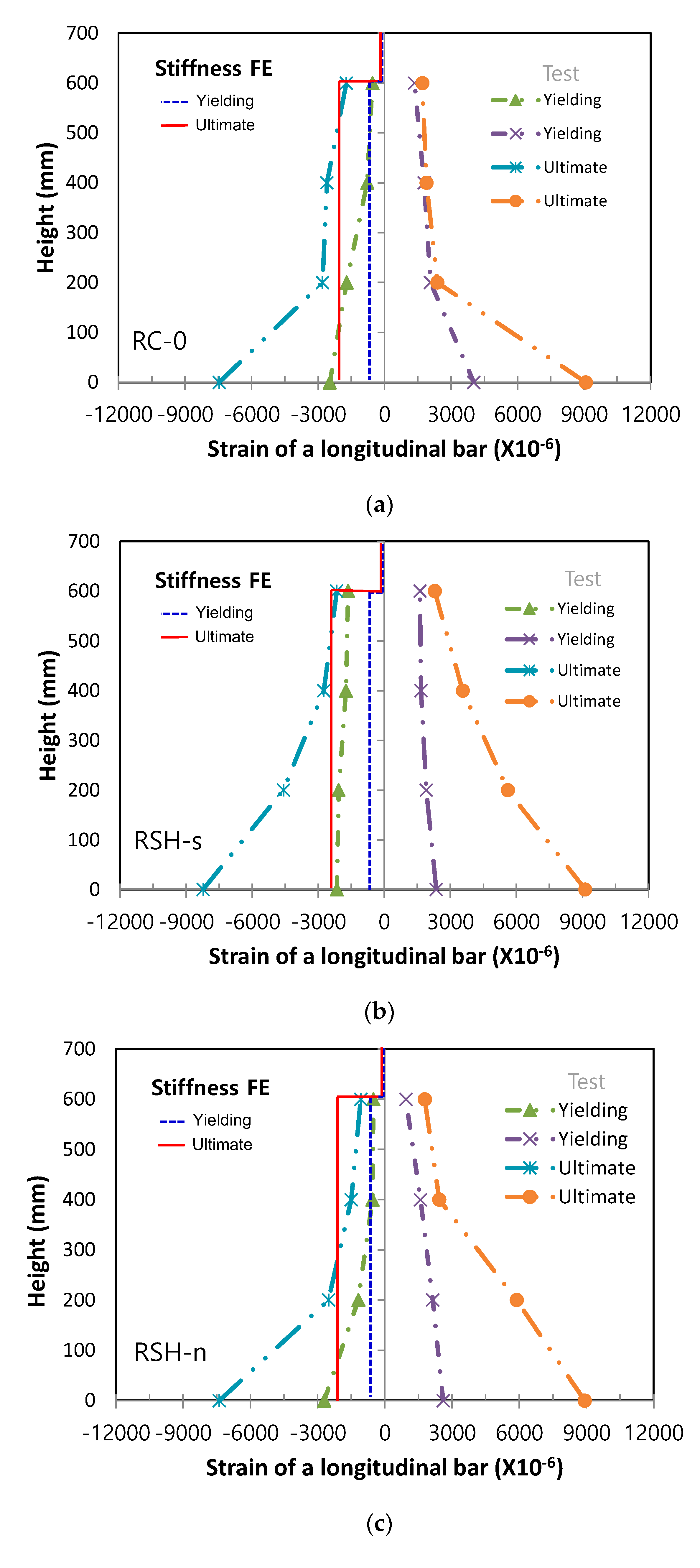
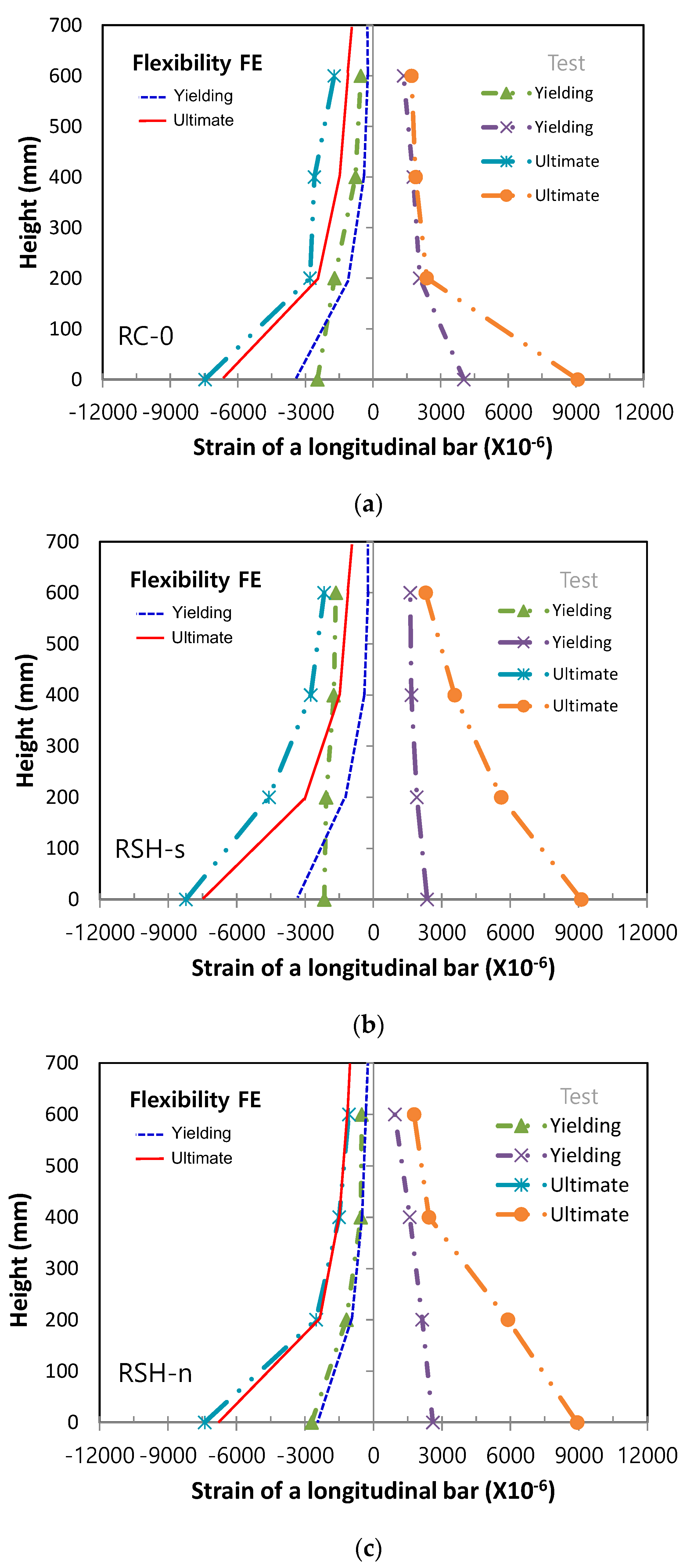
| Specimen Name | Types | Main Steel Bars | Tied Steel Bars |
|---|---|---|---|
| RC-0 | RC | 8-D13 | D10@100 |
| RSH-s | RC & R-SHCC | 8-D13 | D10@100 |
| RSH-n | RC & R-SHCC | 8-D13 | No tied in SHCC |
Publisher’s Note: MDPI stays neutral with regard to jurisdictional claims in published maps and institutional affiliations. |
© 2021 by the authors. Licensee MDPI, Basel, Switzerland. This article is an open access article distributed under the terms and conditions of the Creative Commons Attribution (CC BY) license (https://creativecommons.org/licenses/by/4.0/).
Share and Cite
Cho, C.-G.; Lee, S.-J. Inelastic Responses and Finite Element Predictions of Fiber Cementitious Composite and Concrete Columns. Materials 2021, 14, 2180. https://doi.org/10.3390/ma14092180
Cho C-G, Lee S-J. Inelastic Responses and Finite Element Predictions of Fiber Cementitious Composite and Concrete Columns. Materials. 2021; 14(9):2180. https://doi.org/10.3390/ma14092180
Chicago/Turabian StyleCho, Chang-Geun, and Sun-Ju Lee. 2021. "Inelastic Responses and Finite Element Predictions of Fiber Cementitious Composite and Concrete Columns" Materials 14, no. 9: 2180. https://doi.org/10.3390/ma14092180
APA StyleCho, C.-G., & Lee, S.-J. (2021). Inelastic Responses and Finite Element Predictions of Fiber Cementitious Composite and Concrete Columns. Materials, 14(9), 2180. https://doi.org/10.3390/ma14092180






